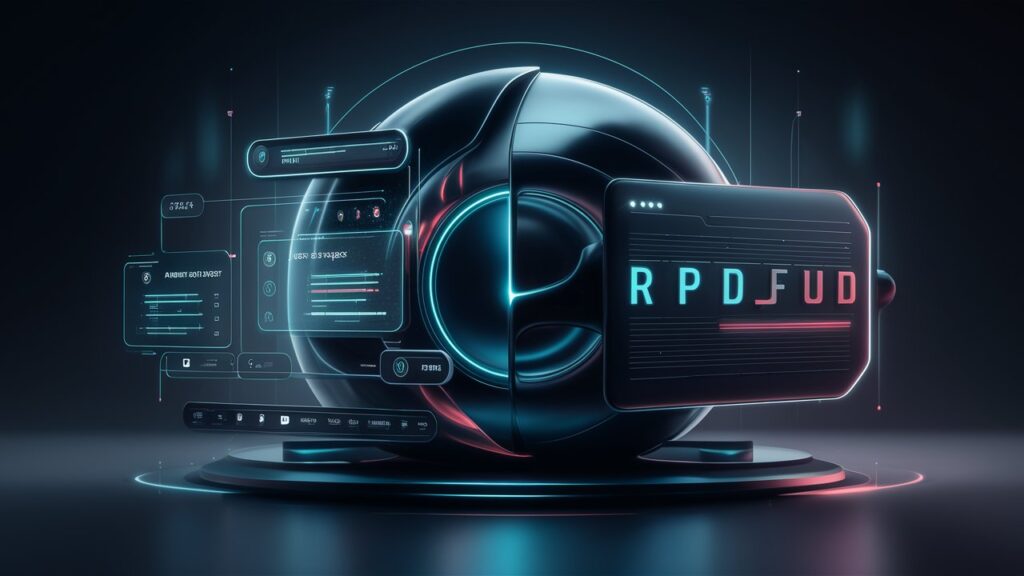Introduction
In today’s rapidly evolving digital landscape, traditional project management and design methodologies often struggle to keep pace with dynamic user demands and market volatility. Enter RPDJAFUD—Resilient Project Development with Justified Agility and Flexible User Design. This holistic framework transcends conventional siloed approaches, merging adaptive project execution with deeply empathetic user-centered design principles. Rooted in resilience, ethical accountability, and iterative flexibility, RPDJAFUD empowers teams to navigate complexity while delivering solutions that resonate authentically with end-users. As organizations grapple with unpredictable challenges—from technological disruption to shifting consumer expectations—RPDJAFUD emerges as a transformative compass, guiding sustainable innovation through structured yet adaptable collaboration. This article unpacks its core pillars, practical applications, and strategic advantages.
Understanding the RPDJAFUD Framework
RPDJAFUD synthesizes three interdependent dimensions: Resilient Project Development (RPD), Justified Agility (JA), and Flexible User Design (FUD). Unlike rigid methodologies like Waterfall or isolated Agile sprints, RPDJAFUD prioritizes systemic adaptability. Resilience here isn’t merely risk mitigation; it’s about cultivating organizational antifragility—learning from stressors to strengthen processes. Justified Agility demands that every iterative pivot is ethically grounded and data-informed, avoiding reactive changes without purpose. Flexible User Design ensures usability remains paramount, with design choices evolving fluidly alongside user feedback and behavioral analytics. Together, these components create a self-correcting ecosystem where projects thrive amid uncertainty while maintaining human-centric integrity.
Resilient Project Development: Building Antifragile Systems
Resilient Project Development transforms volatility into a strategic asset. Traditional project management often crumbles under unforeseen disruptions—budget cuts, scope creep, or technological failures. RPDJAFUD’s resilience pillar, however, embeds proactive contingency planning into every phase. Teams conduct “pre-mortem” workshops, simulating worst-case scenarios to identify vulnerabilities before launch. Resources are dynamically allocated using predictive analytics, ensuring buffer capacities for high-risk tasks. Crucially, RPD fosters a culture of psychological safety, where failures are dissected as learning opportunities rather than punished. For example, a fintech startup using RPD might repurpose a failed payment feature’s codebase for fraud detection—turning collapse into innovation. This resilience isn’t static; it’s reinforced through continuous feedback loops from stakeholders and real-time market scans.
Justified Agility: Ethical Responsiveness in Action
Agility without ethical alignment can devolve into chaotic reactivity. Justified Agility (JA) anchors speed to purpose. It mandates that every sprint, pivot, or scope adjustment must answer two questions: “Does this align with our core mission?” and “Whom does this impact, and how?” JA leverages tools like Ethical Impact Assessments (EIAs), which evaluate decisions against equity, privacy, and societal consequences. For instance, a healthcare app team might delay a feature launch after an EIA reveals algorithmic bias toward marginalized populations. JA also democratizes agility: cross-functional “ethics pods”—comprising developers, UX researchers, and community advocates—review iterations biweekly. This prevents technical debt and ensures agility serves inclusivity, not just shareholder timelines.
Flexible User Design: Dynamic Empathy at Scale
Flexible User Design (FUD) rejects the myth of a “finished” product. Instead, it treats design as a living dialogue with users. FUD integrates behavioral psychology and ethnographic research to map not just what users do, but why they do it. Techniques like “adaptive prototyping” allow interfaces to morph based on A/B testing results—e.g., an e-commerce site’s checkout flow might auto-simplify for users struggling with cognitive load. Critically, FUD prioritizes accessibility as a non-negotiable foundation, not an afterthought. Voice navigation, adjustable contrast modes, and context-aware help systems are baked into initial blueprints. This flexibility extends beyond UI: service design channels (chatbots, community forums) evolve using sentiment analysis, ensuring support aligns with emotional journeys during product adoption.
Integrating RPDJAFUD: A Step-by-Step Blueprint
Implementing RPDJAFUD requires dismantling departmental barriers. Begin with a “Convergence Kickoff,” uniting project managers, designers, engineers, and ethicists to co-define success metrics (e.g., “Reduce user onboarding friction by 40% while maintaining GDPR compliance”). Next, adopt parallel tracking: RPD workflows run alongside FUD research sprints, synchronized via shared dashboards visualizing risk exposure and user satisfaction scores. JA interlocks these tracks—biweekly “Ethical Alignment Sprints” reconcile progress with ethical guardrails. Tools like modular design systems (for FUD) and AI-driven risk simulators (for RPD) automate scalability. Post-launch, “Adaptation Loops” collect ecosystem data (user behavior, market shifts, team morale) to refine the framework itself. A global SaaS company using this approach reduced rollback incidents by 62% while doubling NPS scores within a year.
Conclusion: The Future Is Adaptively Human
RPDJAFUD transcends methodology—it’s a paradigm shift toward humane, resilient innovation. By interweaving project resilience, ethical agility, and user-centric flexibility, organizations can thrive in ambiguity without sacrificing integrity. This framework acknowledges that products are never “done”; they are relationships evolving with users’ lives. As AI, decentralization, and hybrid work reshape our world, RPDJAFUD offers a scaffold for sustainable growth: one where adaptability fuels trust, and ethics drive velocity. Embrace it not as a prescription, but as a mindset—one that transforms uncertainty into your greatest creative catalyst.

Frequently Asked Questions (FAQs)
Q: How does RPDJAFUD differ from Agile or Scrum?
A: While Agile/Scrum focus on iterative delivery, RPDJAFUD embeds resilience, ethics, and user empathy into each iteration. Agile prioritizes speed; RPDJAFUD balances speed with purpose (Justified Agility) and human impact (Flexible User Design). It also formalizes risk resilience as a core pillar, unlike Agile’s implicit adaptability.
Q: Can RPDJAFUD work for non-tech industries like manufacturing or healthcare?
A: Absolutely. RPDJAFUD’s principles are universal. In manufacturing, RPD might involve supply chain redundancy planning; JA could ensure worker safety during process changes; FUD would optimize ergonomic equipment interfaces. Healthcare applications include resilient clinical trial management (RPD), ethically agile patient data usage (JA), and adaptive telehealth interfaces (FUD).
Q: Isn’t the overhead of ethics reviews (JA) and user testing (FUD) resource-intensive?
A: Initially, yes—but RPDJAFUD reduces long-term costs. Ethical missteps (e.g., biased AI) or poor UX often trigger expensive rework, legal fees, or reputational damage. JA’s proactive ethics pods prevent these, while FUD’s continuous testing minimizes user churn. Automation tools (AI for sentiment analysis, modular design libraries) also streamline workflows.
Q: How do we measure RPDJAFUD’s success?
A: Track composite metrics:
- Resilience: Risk exposure scores, incident recovery time.
- Agility Justification: Ethical compliance rates, stakeholder trust indices.
- User Design Flexibility: Usability testing pass rates, accessibility audit scores, user retention.
Holistic KPIs like “Adaptive Maturity Index” (combining team agility + user satisfaction + risk resilience) offer panoramic insights.
Q: Can startups with limited resources adopt RPDJAFUD?
A: Yes—start with lightweight versions. Use free tools like Google’s People + AI Guide (for JA) or Figma’s accessibility plugins (for FUD). Focus RPD on one critical risk area (e.g., data security). As you scale, formalize pods and systems. RPDJAFUD’s flexibility allows phased adoption aligned to capacity.
